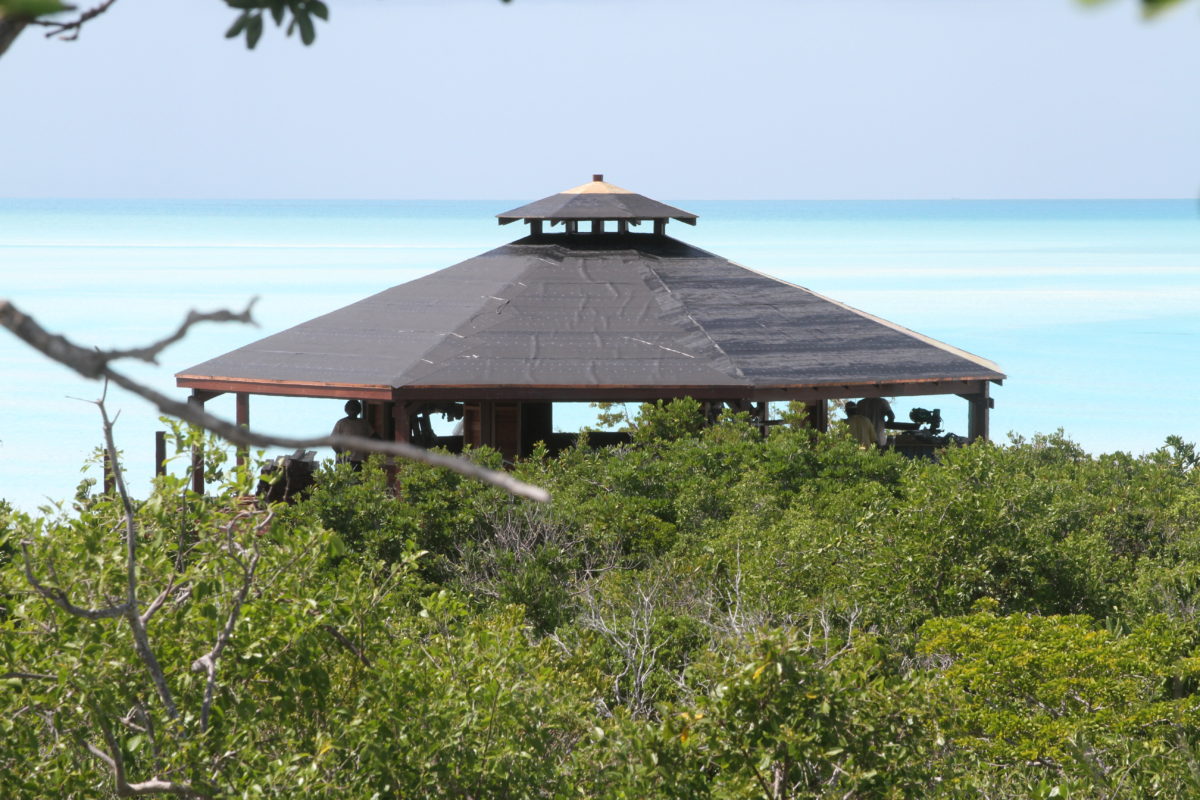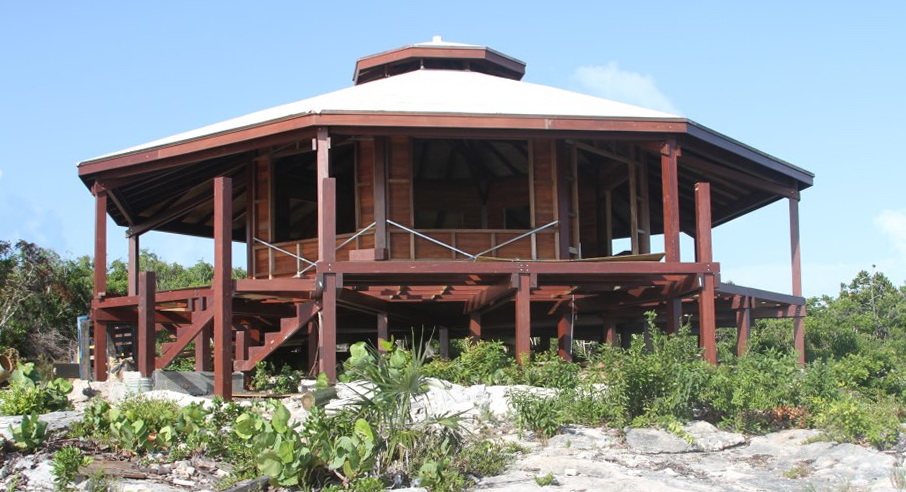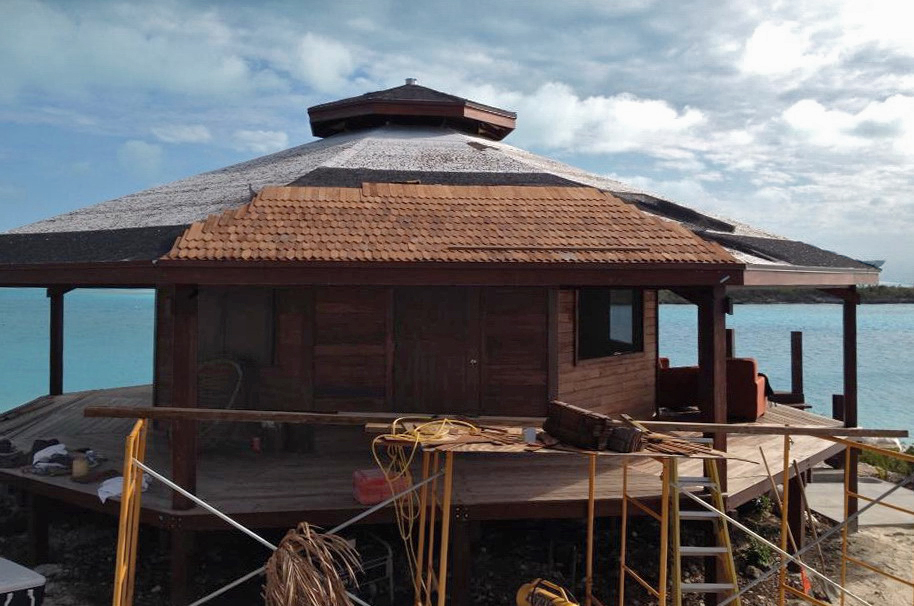The next phase in the re-assembly of this Caribbean hardwood home is to put the house into lock down so as to protect the interior from the elements. This process starts with the roof and then moves downwards towards the walls and then the floor finish. As Teak Bali projects tend to occur primarily in hurricane territory’s (Hawaii & the Caribbean), the design, engineering and final fabrication of the roof structure is integral to protect our Hurricane Resistant Prefab Homes against severe weather conditions.
Hurricane Resistant Prefab Homes – Roof Structure
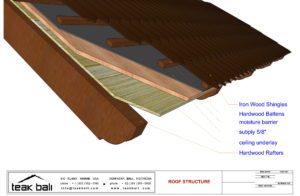 Different projects require a different configuration of roof elements depending upon client requests and engineering requirements. The architect of record will also have input on this crucial element of the hardwood home. The Hardwood roof structure for the CA01 Hurricane Resistant Prefab Home as specified by our engineer consists of the following elements from top to bottom:
Different projects require a different configuration of roof elements depending upon client requests and engineering requirements. The architect of record will also have input on this crucial element of the hardwood home. The Hardwood roof structure for the CA01 Hurricane Resistant Prefab Home as specified by our engineer consists of the following elements from top to bottom:
- Iron wood shingles
- Hardwood battens
- A moisture barrier
- Termite treated sub plywood layer
- Bedeg ceiling underlay ceiling finish
- Hardwood Bangkirai rafters
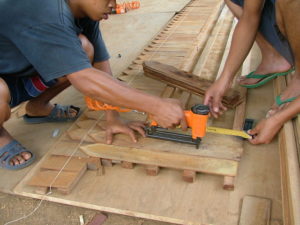 Teak Bali specifies tight batten placement to secure our iron wood shingles to the plywood layer which further protects against the big winds. This CA01 project got a direct hit from Hurricane Matthew in 2016 and did not lose a single shingle on all 4 structures. The majority of our Big Island clients prefer a hidden seam metal roof solution where in Australia, Color Bond tends to be the roof finish of choice for many applications. In these situations where a metal roof is being utilized, the architect of record or client will usually request a sound proof layer to dampen the ambient sound during heavy rains. In Hawaii, one of the typical products used is Owens Corning R11 fiberglass batt insulation with a built-in sound barrier. In situations where our clients want to use Iron Wood shingles as the roof finish, the sound of the rain is not so pronounced and a sound proof layer is not required.
Teak Bali specifies tight batten placement to secure our iron wood shingles to the plywood layer which further protects against the big winds. This CA01 project got a direct hit from Hurricane Matthew in 2016 and did not lose a single shingle on all 4 structures. The majority of our Big Island clients prefer a hidden seam metal roof solution where in Australia, Color Bond tends to be the roof finish of choice for many applications. In these situations where a metal roof is being utilized, the architect of record or client will usually request a sound proof layer to dampen the ambient sound during heavy rains. In Hawaii, one of the typical products used is Owens Corning R11 fiberglass batt insulation with a built-in sound barrier. In situations where our clients want to use Iron Wood shingles as the roof finish, the sound of the rain is not so pronounced and a sound proof layer is not required.
Hurricane Resistant Prefab Homes – Hurricane Clips and other Prevention techniques
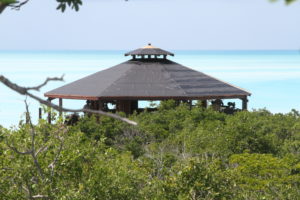 Some installations also require a radiant barrier to protect the roof from heating up the interior of the structure below. This is an efficient way to keep the houses temperate without necessarily requiring the use of Air Conditioners 24/7. Clients that are more sensitive to reducing the carbon footprint of their homes will always opt for this solution as an affordable and energy efficient way to cool down their structures. For all of our hurricane resistant prefab houses located in hurricane territory, our engineers call out for hurricane clips to attach the rafters to the headers (hurricane clips are specified throughout the entire structure). The requirement for hurricane clips on the roof structure relates to uplift forces that can occur when strong lateral forces act on the walls. So in effect the house acts like an accordion, when big winds are pushing against the walls, if the engineering is not correct the roof can literally pull off of the structure. For our St Kitts CA02 project, the architect of record specified that there should be 1/8 of an inch clearance above the rafter blocking allowing for slight air to flow. This trick allows the house to de-pressurize in a big wind event. Some people will also leave a door or window open on the leeward side of their homes to let the house ‘breath’ but others say this is a myth.
Some installations also require a radiant barrier to protect the roof from heating up the interior of the structure below. This is an efficient way to keep the houses temperate without necessarily requiring the use of Air Conditioners 24/7. Clients that are more sensitive to reducing the carbon footprint of their homes will always opt for this solution as an affordable and energy efficient way to cool down their structures. For all of our hurricane resistant prefab houses located in hurricane territory, our engineers call out for hurricane clips to attach the rafters to the headers (hurricane clips are specified throughout the entire structure). The requirement for hurricane clips on the roof structure relates to uplift forces that can occur when strong lateral forces act on the walls. So in effect the house acts like an accordion, when big winds are pushing against the walls, if the engineering is not correct the roof can literally pull off of the structure. For our St Kitts CA02 project, the architect of record specified that there should be 1/8 of an inch clearance above the rafter blocking allowing for slight air to flow. This trick allows the house to de-pressurize in a big wind event. Some people will also leave a door or window open on the leeward side of their homes to let the house ‘breath’ but others say this is a myth.
Teak Bali offers 3 flavors of ceiling finish which sits on top of the rafters and is visible from the interior of our structures:
- Bedeg: This is a plaited bamboo product which is treated and has a long life span.
- Lampit: This is a rattan material with a slightly cleaner look then the Bedeg and is slightly more expensive per m2
- Hardwood Teak or Merbau Ceiling: For our higher end clients that want the wood look throughout, we can offer a hardwood solution to sit on top of the rafter.
Either way, having beige colored material sitting on top of our darker Bangkirai rafters offers a nice contrast and adds to that “Bali style” flair that many of our clients are seeking.
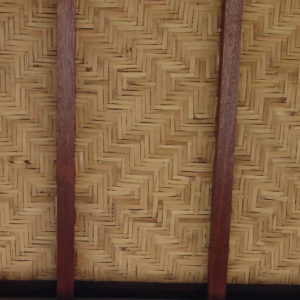
Bedeg ceiling element
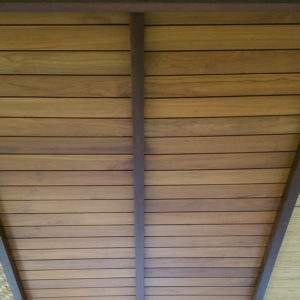
Bedeg ceiling element
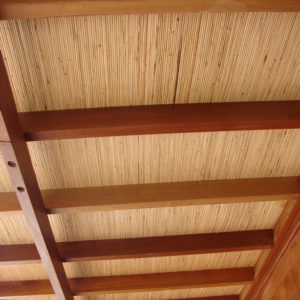
Bedeg ceiling element
Hurricane Resistant Prefab Homes – A Safe Solution
Because Teak Bali is building the majority of our Hurricane Resistant Prefab House projects in hurricane territories, the engineering and construction of the roof structures must take into strict consideration the possibility of a direct hit from a hurricane. We are aware that it is impossible for any builder on the planet to give a guarantee that they are fabricating 100% Hurricane Proof Homes but from soup to nuts Teak Bali can state our homes are engineered and executed to the highest standards. This starts with the design phase, moving onto the engineering and then is finalized by applying the technical input during fabrication where we implement our stringent building protocols. None of our Hurricane Resistant Prefab Homes have ever suffered serious damage in the 20 years we have been in business. We are grateful for this and we want our clients to be clear that Teak Bali Standard Operating Procedures are never to cut corners when it comes to engineering and fabrication. We aim to build solid, durable homes with the highest integrity engineering and manufacturing systems. For further information on our Hurricane Resistant Homes, please visit our dedicated web page on this pertinent topic. For further information on this Bahamas based project, please click here: Caribbean Project A.

